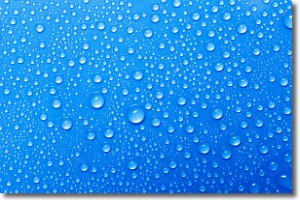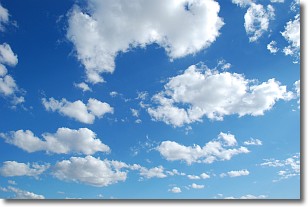Weather Alert in Louisiana
Flood Watch issued July 16 at 3:38PM CDT until July 19 at 1:00AM CDT by NWS New Orleans LA
AREAS AFFECTED: Pointe Coupee; West Feliciana; East Feliciana; St. Helena; Washington; Iberville; West Baton Rouge; East Baton Rouge; Assumption; St. James; St. John The Baptist; Upper Lafourche; St. Charles; Upper St. Bernard; Upper Terrebonne; Lower Terrebonne; Lower Lafourche; Coastal Jefferson; Lower Plaquemines; Lower St. Bernard; Northern Tangipahoa; Southeast St. Tammany; Western Orleans; Eastern Orleans; Northern St. Tammany; Southwestern St. Tammany; Central Tangipahoa; Lower Tangipahoa; Northern Livingston; Southern Livingston; Western Ascension; Eastern Ascension; Upper Jefferson; Lower Jefferson; Upper Plaquemines; Central Plaquemines; Pearl River; Northern Hancock; Northern Harrison; Northern Jackson; Southern Hancock; Southern Harrison; Southern Jackson
DESCRIPTION: * WHAT...Flooding caused by excessive rainfall continues to be possible. * WHERE...Portions of southeast Louisiana, including the following parishes, Assumption, Central Plaquemines, Central Tangipahoa, Coastal Jefferson Parish, East Baton Rouge, East Feliciana, Eastern Ascension, Eastern Orleans, Iberville, Lower Jefferson, Lower Lafourche, Lower Plaquemines, Lower St. Bernard, Lower Tangipahoa, Lower Terrebonne, Northern Livingston, Northern St. Tammany, Northern Tangipahoa, Pointe Coupee, Southeast St. Tammany, Southern Livingston, Southwestern St. Tammany, St. Charles, St. Helena, St. James, St. John The Baptist, Upper Jefferson, Upper Lafourche, Upper Plaquemines, Upper St. Bernard, Upper Terrebonne, Washington, West Baton Rouge, West Feliciana, Western Ascension and Western Orleans and southern Mississippi, including the following areas, Northern Hancock, Northern Harrison, Northern Jackson, Pearl River, Southern Hancock, Southern Harrison and Southern Jackson. * WHEN...Through late Friday night. * IMPACTS...Excessive runoff may result in flooding of rivers, creeks, streams, and other low-lying and flood-prone locations. Flooding may occur in poor drainage and urban areas. * ADDITIONAL DETAILS... - A tropical disturbance moving westward over the northern Gulf will produce periods of potentially heavy and training rainfall through Friday night. Rainfall totals of 3 to 6 inches are likely through Friday night, especially near and south of the Interstate 10 corridor with isolated totals up to 10 inches possible. - http://www.weather.gov/safety/flood
INSTRUCTION: You should monitor later forecasts and be alert for possible Flood Warnings. Those living in areas prone to flooding should be prepared to take action should flooding develop.
Want more detail? Get the Complete 7 Day and Night Detailed Forecast!
Current U.S. National Radar--Current
The Current National Weather Radar is shown below with a UTC Time (subtract 5 hours from UTC to get Eastern Time).

National Weather Forecast--Current
The Current National Weather Forecast and National Weather Map are shown below.

National Weather Forecast for Tomorrow
Tomorrow National Weather Forecast and Tomorrow National Weather Map are show below.

North America Water Vapor (Moisture)
This map shows recent moisture content over North America. Bright and colored areas show high moisture (ie, clouds); brown indicates very little moisture present; black indicates no moisture.

Weather Topic: What is Condensation?
Home - Education - Precipitation - Condensation
 Next Topic: Contrails
Next Topic: Contrails
Condensation is the process which creates clouds, and therefore
it is a crucial process in the water cycle.
Condensation is the change of matter from a state of gas into a state of liquid,
and it happens because water molecules release heat into the atmosphere and
become organized into a more closely packed structure, what we might see as
water droplets.
Water is always present in the air around us as a vapor, but it's too small for
us to see. When water undergoes the process of condensation it becomes organized
into visible water droplets. You've probably seen condensation happen before on the
surface of a cold drink!
Next Topic: Contrails
Weather Topic: What are Cumulonimbus Clouds?
Home - Education - Cloud Types - Cumulonimbus Clouds
 Next Topic: Cumulus Clouds
Next Topic: Cumulus Clouds
The final form taken by a growing cumulus cloud is the
cumulonimbus cloud, which is very tall and dense.
The tower of a cumulonimbus cloud can soar 23 km into the atmosphere, although
most commonly they stop growing at an altitude of 6 km.
Even small cumulonimbus clouds appear very large in comparison to other cloud types.
They can signal the approach of stormy weather, such as thunderstorms or blizzards.
Next Topic: Cumulus Clouds
Current conditions powered by WeatherAPI.com




